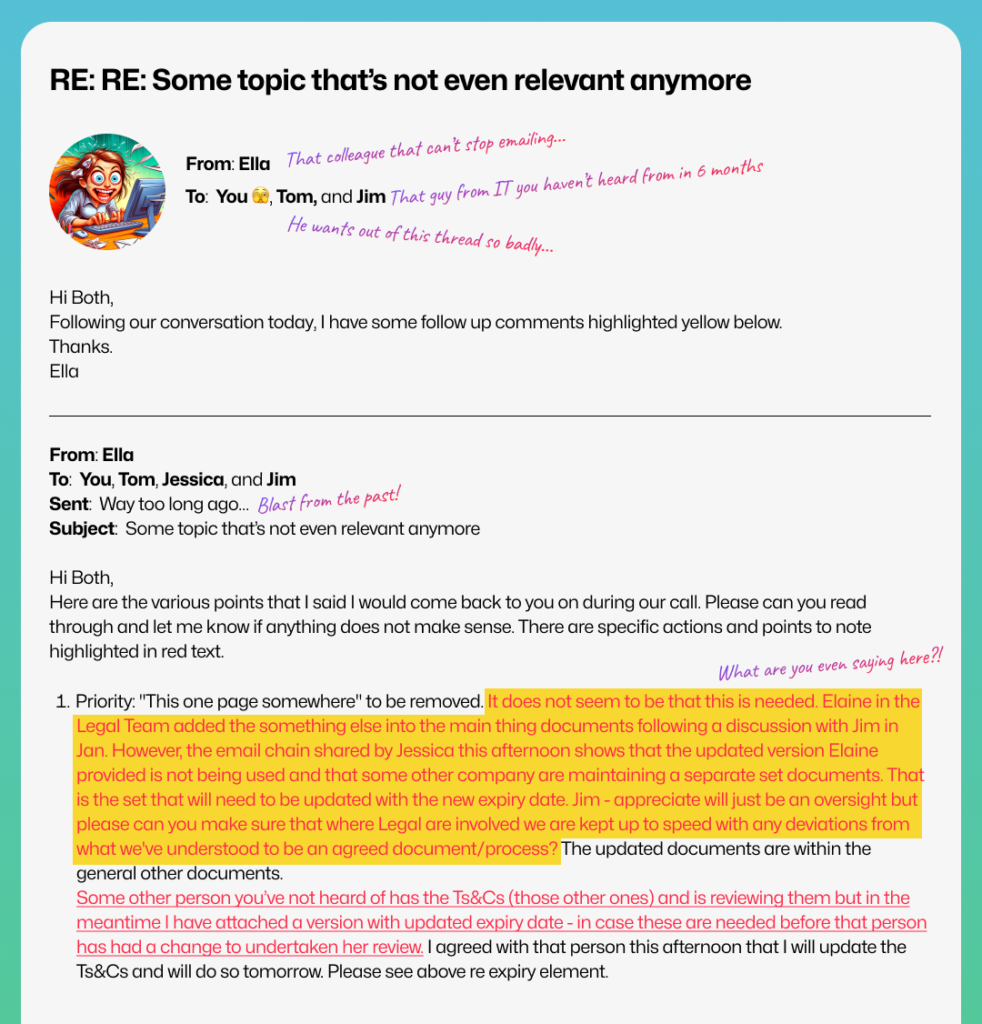
It’s 2024. Technology has shifted our communication from traditional letters to digital emails to advanced real-time communication tools.
Inefficiency
Long email threads are common in corporate settings, often bogged down with CCs and BCCs. This creates uncertainty about who is up to date and leads to off-topic diversions that bury essential information beneath layers of responses.
Visual Clutter
Imagine those all-too-familiar email threads:

- These threads complicate rather than clarify, overloaded with different colors and text styles.
- Such reliance on visual cues like “See my reply in yellow” can be especially challenging for colorblind people, demonstrating a lack of inclusivity.
Time Waste
Office workers can receive hundreds of emails daily, devoting substantial time to sorting through a mix of critical and trivial messages. This sorting detracts from time better spent on tasks that directly contribute to project success.
Alternatives
- Synchronous communication: Embrace real-time, streamlined communication as much as possible to keep everyone on the same page without email clutter. That means real face-to-face meetings, digital meetings, and otherwise chat applications.
- That email example above could have been a simple chat message saying, “I’d like to share this updated document (link it to a shared location that everyone can access). It’s updated with the latest legal notes and ready for placement on the website.”. Boom 💥. Done 🏁
- If someone wants to respond, Slack allows threads, and Teams lets you react directly to a specific message.
- That email example above could have been a simple chat message saying, “I’d like to share this updated document (link it to a shared location that everyone can access). It’s updated with the latest legal notes and ready for placement on the website.”. Boom 💥. Done 🏁
- Asynchronous communication: Leverage collaborative documents. Tools like Google Docs, Confluence, and Office facilitate comments and discussions directly in the document itself, bypassing the cumbersome formatting of emails.
Consider the Necessity
Though email is sometimes necessary—especially for external communications—modern platforms like Slack and Microsoft Teams also facilitate external interactions:
- Assess whether the communication could be more efficiently conducted via chat or within a shared document.
- Challenge the default to email when quicker, more collaborative methods could achieve better and faster results ⚡

